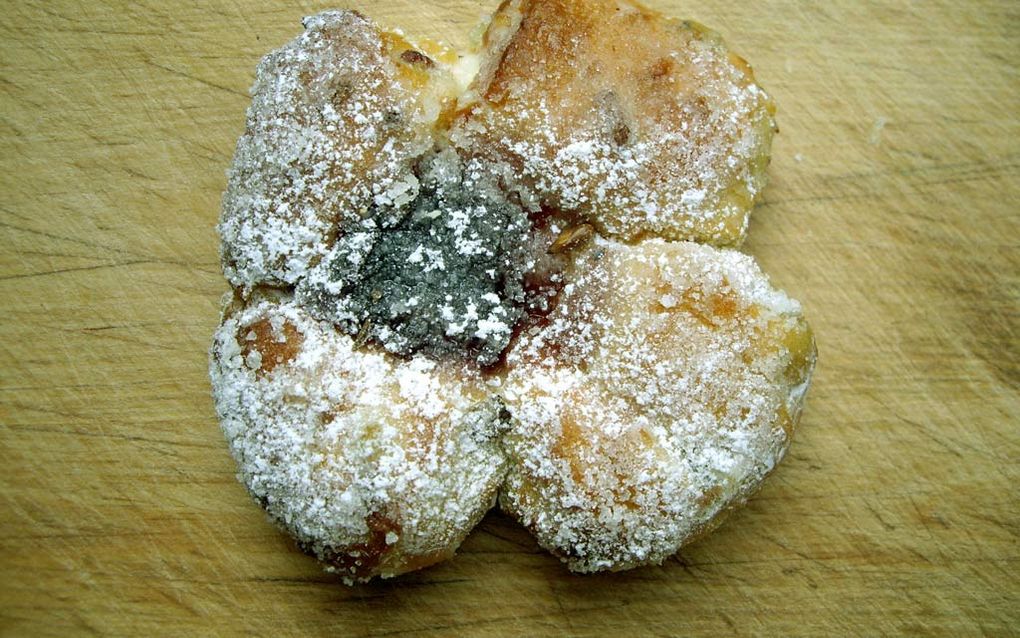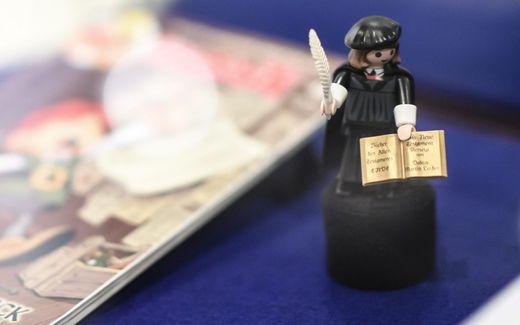Recipe from Germany: Sweet Luther roses to eat
28-10-2023
Christian Life
Geertje Bikker-Otten, RD

Reformation bun with icing sugar. Photo Wikimedia Commons
Christian Life
Whoever visits a bakery in the German state of Saxony at the end of October has a chance to find "Reformation buns" in the showcase, I discovered last year.
I had never heard of it before, but in this region –Dresden and its surroundings– it is a popular tradition. This must have something to do with the fact that Reformation Day is an official holiday in this German state (as well as in other states, I discovered later).
There is 'Reformationsbrot', and there are 'Reformationsbrötchen'. The former is similar in size to a dough bread; the latter are more like a coffee roll. Both variants are richly filled – it is, after all, food for a festive holiday.
There are various stories about the shape of the bun. A 'Reformationsbrot' is incised cross-shaped at the top – which is symbolic in itself. This makes the bread look somewhat like headgear. For this reason, it was (mockingly) called "Pfaffenkäppchen" (literally: papist cap, also translatable as cardinal's hat) or "Tetzelmütze" (hat of Johann Tetzel, the indulgence preacher against whom Martin Luther fought). But the four surfaces could also refer to Luther's supporters.
The shape of Reformationsbrötchen speaks for itself. They are Luther roses made of dough: five petals and a red heart.
Recipe
Ingredients (for 12 buns)
- Flower (500 grams)
- Two sachets of dried yeast (14 grams in total)
- Lukewarm milk (250-300 mL)
- Salt (9 grams)
- Softened butter (50 grams)
- Sugar (30 grams)
- Raisins (100 grams)
- Almonds (50 grams)
- Succade (1 tablespoon)
- Grated lemon peel (1 teaspoon)
- Apricot, strawberry or cherry jam
- Icing sugar
Preparation
-
Weigh the flour in a bowl. Make a hole in the middle. Put the yeast in there. Pour most of the lukewarm milk into the hole. From there, mix everything together. If necessary, add some more milk if not all the flour is absorbed. (I used 270 mL of milk.) Knead the dough, either by hand or in a food processor, until it is elastic and shiny. Let the ball of dough rise, covered, in a warm place for 30 minutes.
-
Finely chop the succade (if necessary). Coarsely chop the almonds. Add the salt, butter, sugar, raisins, chopped almonds, succade and lemon zest to the dough ball in the bowl. Knead everything a little more so that everything is mixed. Allow the dough to rise, covered, in a warm place for another 30 minutes.
-
Preheat the oven to 200 degrees Celsius (hot-air oven: 180 degrees Celsius). Line two baking trays with baking paper.
-
Divide the ball of dough into quarters with a pastry cutter or a knife. Divide each quarter into three roughly equal pieces. Shape these into balls and flatten them slightly. Cut or trim each bun five times and place them on the baking tray. Using a spoon, spoon a heaping tablespoon of jam into the centre of each roll. Bake the buns for 15-20 minutes until done and browned. Let them cool on a wire rack. Sprinkle them generously with icing sugar before consumption, if desired.
This article was published in the Dutch daily Reformatorisch Dagblad on October 24, 2023
Related Articles





